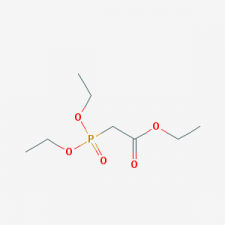The chemical company continued to build new factories. From 2005 to 2015, global investment in the chemical industry has nearly tripled and now exceeds US $200 billion.
The chemical company continued to build new factories. From 2005 to 2015, global investment in the chemical industry has nearly tripled and now exceeds US $200 billion.
Most of the new and under construction chemical companies in the world are based on traditional design and construction, but the engineering departments and EPC contractors of chemical companies are about to make significant changes to the engineering process.
Growth creates the need for scale. In the autumn of 2017, the sadara large-scale project completed in Jubail, Saudi Arabia, marks another milestone in the global chemical boom. By investing $20 billion, Saudi Aramco and Dow Chemical have positioned themselves to develop the growing demand for chemicals. According to market research estimates, in the next 20 years, the annual demand growth of chemical products will be between 4% - 4.5%.
In response, chemical companies continue to invest, and to some extent, the scale of investment is also increasing. Saudi Aramco, an oil company, and SABIC, a plastic manufacturer, plan to spend $20 billion on a petrochemical complex in the next few years.
The Saudi industry leader is planning to spend $5bn to build an ethylene propylene plant with French energy company total. ADNOC, the Abu Dhabi state-owned oil company, has announced plans to increase its petrochemical capacity by 300 times to 11.4 million tons by 2025.
However, the launch of the spectacular project is not limited to the Middle East. The shale gas boom in the United States has created a demand for new petrochemical projects. Four new ethane cracking units were completed in 2017. Another four turrets are under construction and are scheduled to start operation in 2019.
The second wave of investment has begun. The feasibility of building five more turrets is being evaluated. The American Chemical Council estimates that the annual capital expenditure of us chemical companies will increase from $40 billion in 2016 to $58.6 billion by 2021. In February this year, the Commission listed 294 current projects with a total value of $179 billion.
Last year, the European chemical industry's capital expenditure on expanding production and building new plants and equipment also increased. According to the estimates released by Cefic, the capital expenditure of the global chemical industry increased more than threefold from 2005 to 2015. Excluding the Middle East, where data are not available, capital expenditures in these chemicals producing countries rose to $210 billion in 2015. In 2017, the capital expenditure of German chemical producers was about $19.8 billion.
The demand for raw materials to support existing and new capacity will have a follow-up effect. The oil and gas industry needs further investment. The International Energy Agency (IEA) estimates that by 2040, petrochemicals will replace the fuel sector as a major driver of global crude oil demand. The chemical industry's daily demand will reach 15.7 million barrels, 47% higher than in 2015.
That is basically good news for the chemical plant construction industry. However, structural change in the industry has been underway for several years. As projects continue to increase in size, greater risk has to be accepted. In addition, investors and plant operators prefer to do business with global partners who take total responsibility for everything from feasibility studies to commissioning, and often the financing as well. European plant construction companies, and German firms in particular, are now too small to take on that role.
For several years, German companies have been lamenting the increased competitive pressure. A current study carried out by the German Engineering Federation VDMA indicates that competition will become even tougher in world markets. EPCs based in China, Western Europe and the US are regarded as major competitors in the market for large projects. Depending on the technology and area of specialisation, companies have felt the effects of lower oil prices as customers cancelled, or delayed capital spending projects.
Restrictive financing conditions and a reluctance to offer alternative financing services are often the reason why German companies fail to acquire EPC projects. A current study by the consultants PWC reveals just how important this factor can be. Customers ask for project financing in one out of every four requests for quotation.
Despite increased capital spending in the chemical industry, the trend towards larger-scale plants reduces the number of medium-scale projects. As a result, German EPCs are looking not only for ways to differentiate themselves, but also for new business models. For example, the engineering companies want to attract customers with their technology and by adding operational services to their portfolios. They are doing this in response to growing market demand. The engineering and services company Bilfinger estimates that by 2020 there will be more than 11,000 chemical and pharmaceutical plants in Europe, North America and the Middle East that are more than ten years old and will require modernisation. The service business provides an opportunity to increase turnover, and that is one factor which makes it attractive to EPCs.
In addition, the presence of a local service organisation provides an operating base which can be used by a local sales team to acquire new projects and for other activities in the regions. There is an ongoing trend towards increased local content in construction projects. This includes equipment procurement, often based on a best cost country sourcing strategy, as well as local recruitment for project work such as installation and project management. Local content is often a requirement imposed by customers. This is frequently the case in Asia and the Middle East where companies are state-owned, and it is used as a means for stimulating the local economy.

